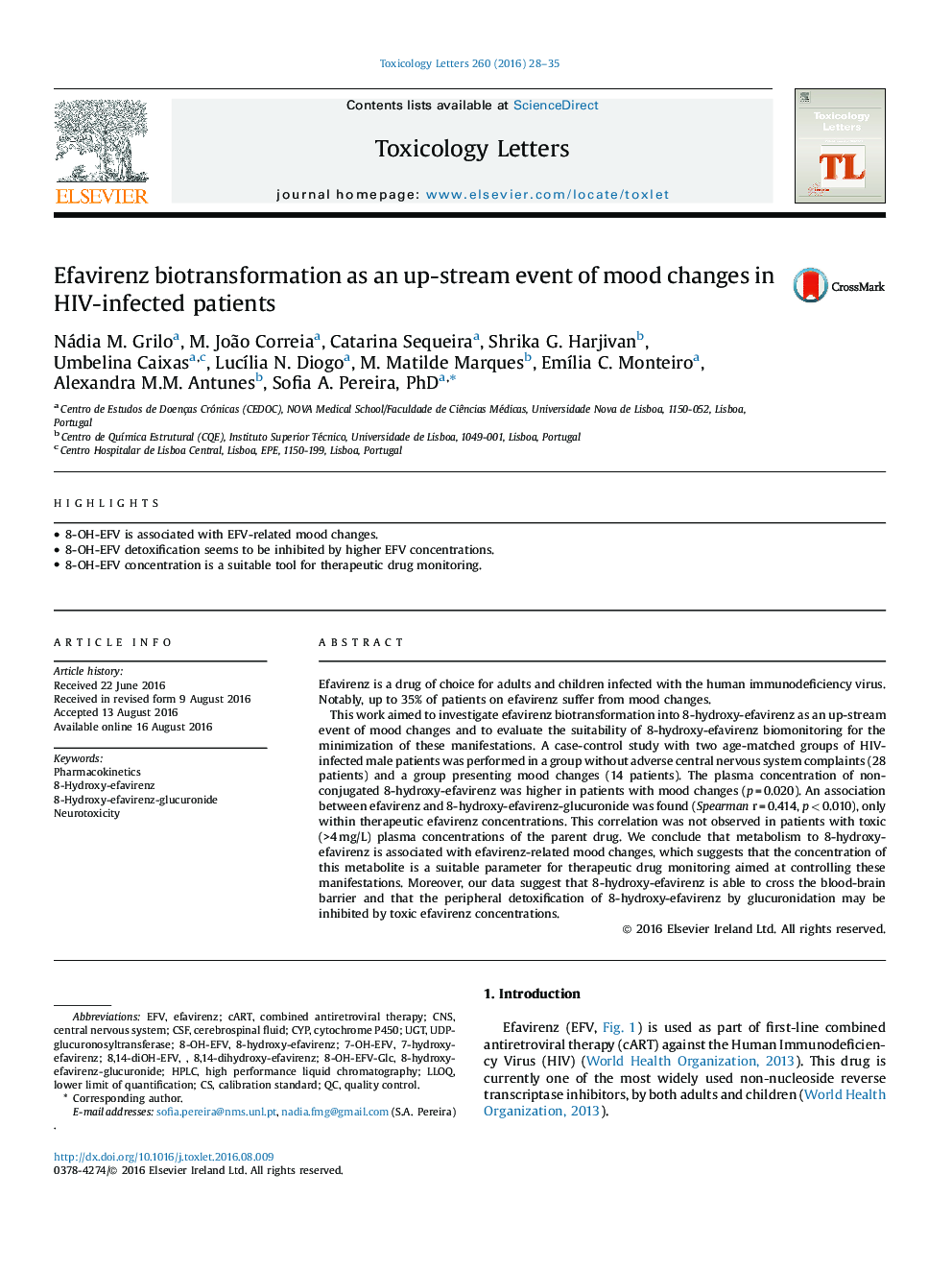| Article ID | Journal | Published Year | Pages | File Type |
|---|---|---|---|---|
| 5562275 | Toxicology Letters | 2016 | 8 Pages |
â¢8-OH-EFV is associated with EFV-related mood changes.â¢8-OH-EFV detoxification seems to be inhibited by higher EFV concentrations.â¢8âOH-EFV concentration is a suitable tool for therapeutic drug monitoring.
Efavirenz is a drug of choice for adults and children infected with the human immunodeficiency virus. Notably, up to 35% of patients on efavirenz suffer from mood changes.This work aimed to investigate efavirenz biotransformation into 8-hydroxy-efavirenz as an up-stream event of mood changes and to evaluate the suitability of 8-hydroxy-efavirenz biomonitoring for the minimization of these manifestations. A case-control study with two age-matched groups of HIV-infected male patients was performed in a group without adverse central nervous system complaints (28 patients) and a group presenting mood changes (14 patients). The plasma concentration of non-conjugated 8âhydroxyâefavirenz was higher in patients with mood changes (p = 0.020). An association between efavirenz and 8-hydroxy-efavirenz-glucuronide was found (Spearman r = 0.414, p < 0.010), only within therapeutic efavirenz concentrations. This correlation was not observed in patients with toxic (>4 mg/L) plasma concentrations of the parent drug. We conclude that metabolism to 8-hydroxy-efavirenz is associated with efavirenz-related mood changes, which suggests that the concentration of this metabolite is a suitable parameter for therapeutic drug monitoring aimed at controlling these manifestations. Moreover, our data suggest that 8-hydroxy-efavirenz is able to cross the blood-brain barrier and that the peripheral detoxification of 8-hydroxy-efavirenz by glucuronidation may be inhibited by toxic efavirenz concentrations.
